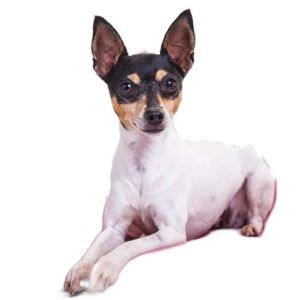Boerboel
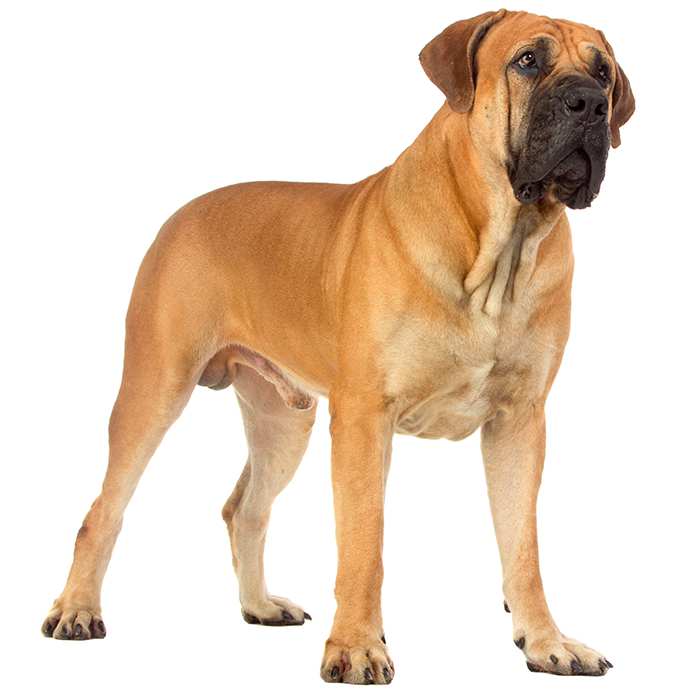

| Recommended for | Families with older children |
| Breed Classification | Working group |
| Other names | South African Mastiff |
| Lifespan | 9-13 years |
| Size | Large |
| Temperament | Loyal, confident, calm |
| Intelligence | High |
| Tendency to bark | Moderate |
| Maintenance Level | High |
| Health Risk | This breed has an around average probability of having health issues in its lifetime, hence it is one of the more affordable breeds to insure. |
Insuring a Boerboel?
Get award-winning cover with more benefits and up to 80% of eligible vet bills reimbursed. Find out about your cover options.
Get a quick quote
Is this breed right for you?
Try our breed selector quiz to find out your best matching breed!
Insuring a Boerboel?
Get award-winning cover with more benefits and up to 80% of eligible vet bills reimbursed. Find out about your cover options.
Get a quick quote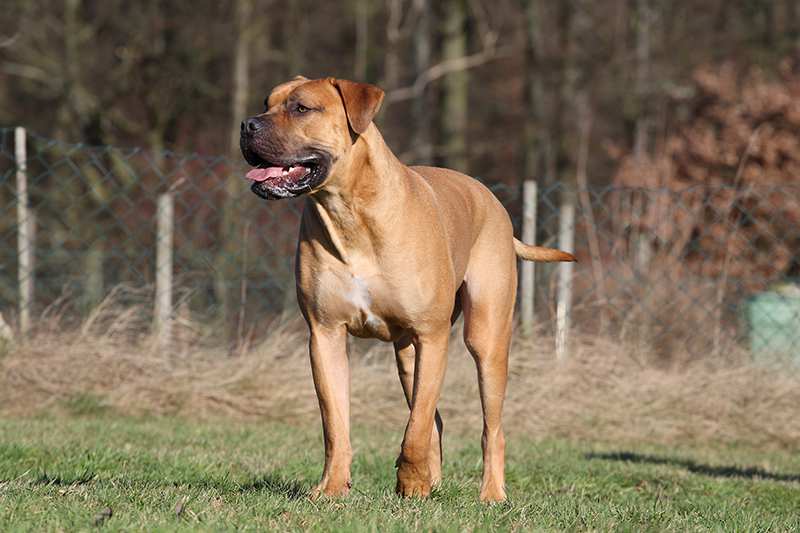
Breed history of Boerboels
The name Boerboel is Afrikaans in origin and can be roughly translated to ‘Farmer’s Mastiff’. Boer (Afrikaaner) settlers in South Africa began developing the breed as far back as the 1600’s. The Boerboel’s uses were very varied in its early history, as conditions for the Boers required that the dog be an adequate tracker, a hunting dog, attack dog and intimidating guard dog.
Mastiff-type dogs from Europe, dogs native to Africa and English breeds like Bulldogs and Bull Terriers may all have contributed to their development. Only the hardiest dogs were bred and any dog who was not tough enough did not survive.
During the Boer War and the migration of the majority of the Boer people inland, the Boerboel became scattered throughout South Africa. The breed found homes with a number of settlers of various European backgrounds, including the English. Away from the farm it was used to guard and protect the family and the homestead.
The original working Boerboels of South Africa were almost lost in the early 1900’s. Increasing urbanisation caused cross breeding with any dog who would bark. After the First and Second World Wars, like many breeds, the Boerboel was facing extinction.
In the 1980’s a group called the South African Boerboel Breeders Society (SABBS) actively worked at saving the breed. Since this time, careful breeding together with a concerted effort on behalf of SABBA to find genuine Boerboel stock across the country has saved the South African Boerboel from extinction.
In 1990 SABBA filmed and distributed a documentary on the Boerboel’s rich and extensive history in a harsh and unforgiving land. The dog bred for Africa captured the world’s attention and the Boerboel began to generate a great deal of interest overseas. In 2010 the breed was officially accepted into the American Kennel Club’s Working Dog Group. Today, the Boerboel can be found in many countries across the globe, including Australia.
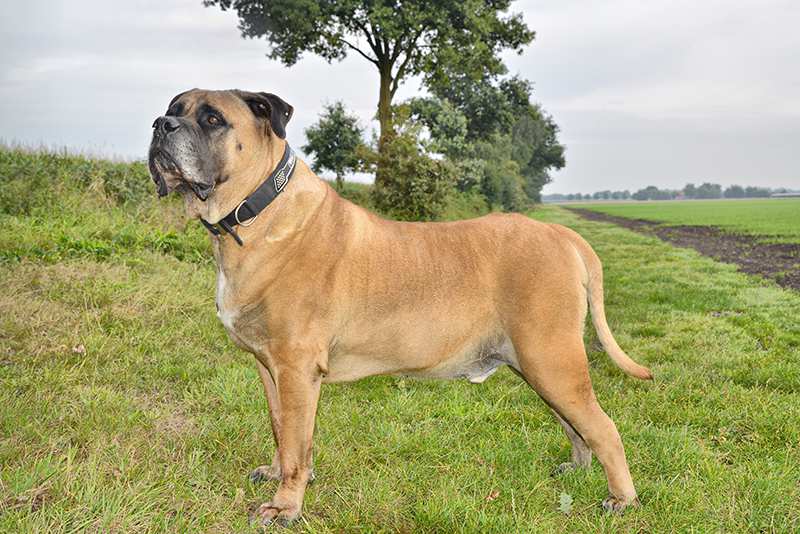
Physical description of Boerboels
The Boerboel is a very large, strong-boned, muscular dog that is exceedingly strong and hardy, equipped to survive the harsh African climate.
Its broad, blocky head and broad muzzle are impressive and a distinctive feature of the breed. The neck is powerful and well-muscled and the chest is long, broad and deep.
The Boerboel coat is short, dense, smooth and shiny, while the skin is thick and loose but fits smoothly.
| Weight range | 70 to 90 kg |
| Height range | 60 to 70 cm |
| Colours | Brown, brindle, cream, tawny, red, reddish brown |
| Coat length | Short |
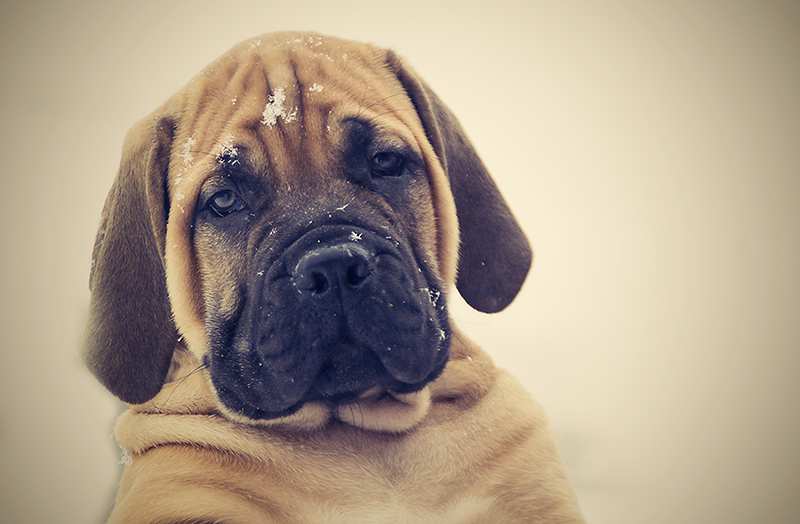
Boerboel personality and temperament
The Boerboel is a loyal and easy-going companion dog, having been bred for temperament as well as function. As a result, the Boerboel has evolved into a loving companion with an even temperament. Because Boerboels are primarily a family and property guardian, they are happy and at ease in the family environment where they can establish their area to call their own.
The Boerboel will accept the whole family, not just one person, as their master because they feel their primary duty is to respect and protect all family members. They are ferocious guard dogs who will growl like a lion when protecting their family from a real threat and will fight ferociously without consideration for their own safety, even to the death.
Boerboels are tough working dogs with a reputation for being able to adapt to changing and unforgiving conditions. Also used for tracking and hunting, the breed has a tremendous prey instinct and shows a great level of alertness while outdoors. Having a long history protecting family and property from intruders, they can be a bit standoffish with strangers and can show aggression when feeling uneasy. These instincts can be moderated by introducing the dog to lots of new people and pets at a young age —the more strangers a Boerboel puppy is introduced to, the better.
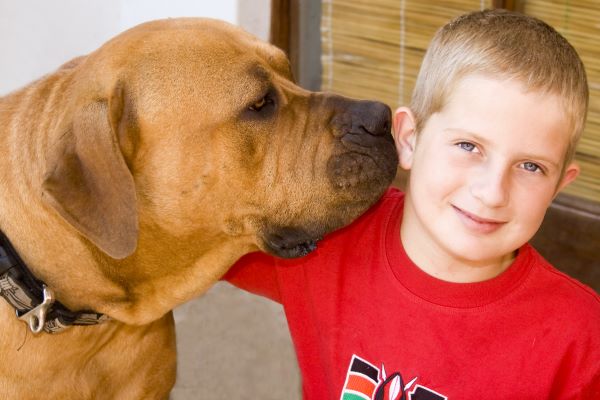
Boerboels with kids and other pets
Boerboels have a great reputation with children, and they are good companions for kids as friend and playmate, but also guardian. Many stories have been told about a Boerboel spending hour after hour guarding a little baby in a pram. They feel the whole family belongs to them and that their sole purpose is to protect them.
Smaller kids may find the Boerboel’s size rather overwhelming. They are best suited to families with children over the age of eight and supervision during play time is always advisable.
Boerboels are a protective, territorial breed. Aggression towards other dogs, particularly those of the same sex, can occur, so early socialisation during puppyhood is key to avoiding such occurrences down the track. They will not take kindly to challenges from other dogs, and visiting dog parks is not recommended.

Boerboel training and exercise
Being large, strong, athletic dogs, Boerboels require a good deal of routine exercise to remain fit and healthy, even though they may sometimes not seem keen for it. Daily exercise sessions are essential, such as a long walk on a leash or play sessions in a securely fenced area. They also need mental stimulation and interaction with their owners.
They can be a little bit lazy at times, especially during the warmer months. Getting them outside at least once a day for a long walk is essential to the dog’s health, so they may sometimes need some firm persuasion. They should always be on leash because of their protective instinct.
Socialisation and training from an early age are important for this breed. They are large dogs and first-time or inexperienced owners may find them challenging. Very independent and confident, Boerboels have a tendency to be a bit pig-headed at times. Consistent training is very important for the Boerboel’s development and temperament. It’s essential that owners position themselves as a strong pack leaders who won’t allow any misbehaviour or bullying aimed at other animals.
| Energy level | Medium |
| Exercise requirements | High |
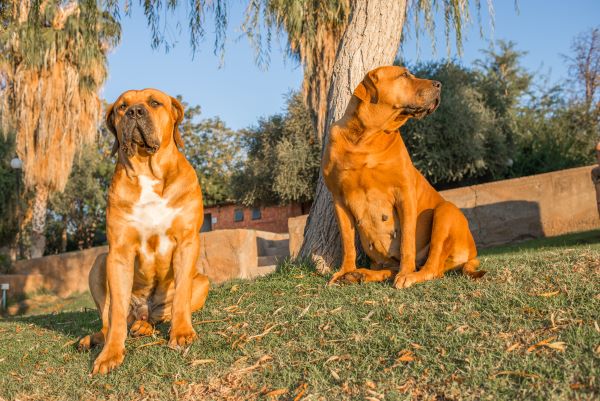
Boerboel feeding and nutrition
The Boerboel should be fed a premium, high-quality dog food appropriate to the dog’s age (puppy, adult, or senior) and activity level.
Boerboels that aren’t sufficiently exercised may become overweight, so watch your dog’s calorie consumption and weight level and don’t overindulge in the treats department.
Check with your vet if you have any concerns about your Boerboel’s weight or diet.
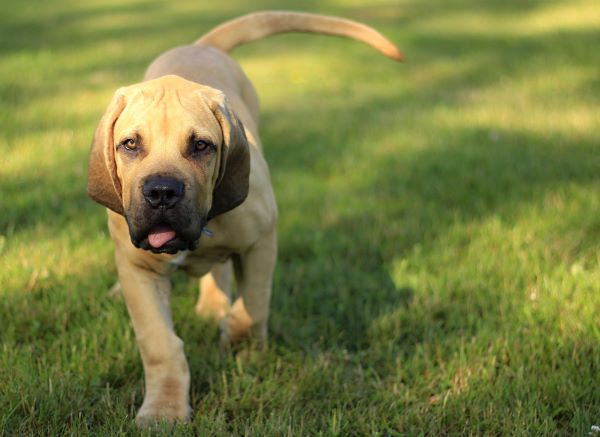
Boerboel care and grooming
The Boerboel has a short, dense coat that sheds moderately. Weekly brushing will help to remove any loose hair and keep the Boerboel looking its best.
A good brushing also promotes new hair growth and distributes skin oils throughout the coat to help keep it shining and healthy.
Boerboels need a bath only occasionally.
Health issues for Boerboels
Because of careful, selective breeding paired with hundreds of years of hard living in South Africa, the Boerboel is generally a healthy breed.
- Hip Dysplasia is a hereditary condition and common in many breeds where the hip doesn’t develop as it should, often resulting in prolonged limping and eventually lameness in later life.
- Elbow dysplasia is an inherited condition that can occur in most dog breeds but is most commonly seen in large to giant breed dogs. It is the most frequent cause of front leg lameness in dogs.
- Congenital Heart Disease is the malformation of valves in the heart, causing serious problems that will often result in death within the first year of life. Those that have more mild forms of the condition will mostly survive but will show a tendency to avoid exercise, may have stunted growth or will occasionally faint. Cardiac arrest can occur at any time, but in most cases later in the dog’s life.
- Gastric dilatation-volvulus, also know as bloat, is a deadly condition affecting large dogs. Risk is increased if the dog is fed one large meal a day, eats quickly, drinks large amounts of water or exercises after eating. The stomach twists, making the dog unable to belch or vomit to get rid of excess air, and as a result the blood supply to the heart is impaired. Unless immediately attended to, the dog may die. Symptoms of bloat include a distended belly, excessive drooling, dry having, restlessness, exhaustion, weakness and a quick heart rate.

- Ectropion is an abnormality of the eyelids in which the lower eyelid rolls outward or is everted. This causes the lower eyelids to appear droopy, as if it is sagging away from the eye rather than resting against it. It is common in older dogs and can be repaired surgically in severe cases.
- Entropion is a condition which generally occurs in young dogs and causes the eyelid to roll inwards, which can lead to irritation or injury of the eyeball. Signs include rubbing or scratching around the eye area. It can be treated surgically if necessary.
Not all conditions are covered by Pet Insurance. For details of Bow Wow Meow Pet Insurance cover, refer to the Product Disclosure Statement.
Free engraved pet ID tag on sign up3
Customer Satisfaction
21 day cooling off
Easy to use Pet Portal

GapOnly® in vet claims
FOR MORE INFORMATION
Boerboel Australia Inc: https://boerboelaustralia.com.au/

